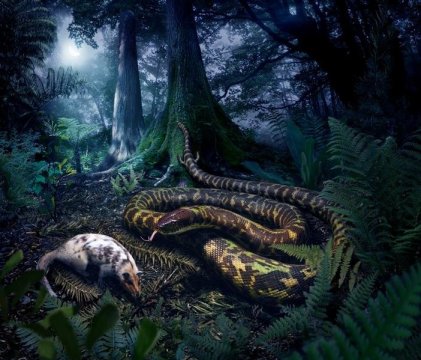The original snake ancestor was a nocturnal, stealth-hunting predator that had tiny hindlimbs with ankles and toes, according to research.
The study, led by Yale University, analyzed fossils, genes, and anatomy from 73 snake and lizard species, and suggests that snakes first evolved on land, not in the sea, which contributes to a longstanding debate. They most likely originated in the warm, forested ecosystems of the Southern Hemisphere around 128 million years ago.
Lead author Allison Hsiang said: “While snake origins have been debated for a long time, this is the first time these hypotheses have been tested thoroughly using cutting-edge methods. By analyzing the genes, fossils and anatomy of 73 different snake and lizard species, both living and extinct, we’ve managed to generate the first comprehensive reconstruction of what the ancestral snake was like.”
By identifying similarities and differences between species, the team constructed a large family tree and illustrated the major characteristics that have played out throughout snake evolutionary history.
Their results suggest that snakes originated on land, rather than in water, during the middle Early Cretaceous period (around 128.5 million years ago), and most likely came from the ancient supercontinent of Laurasia. This period coincides with the rapid appearance of many species of mammals and birds on Earth.
The ancestral snake likely possessed a pair of tiny hindlimbs, and targeted soft-bodied vertebrate and invertebrate prey that were relatively large in size compared to prey targeted by lizards at the time. While the snake was not limited to eating very small animals, it had not yet developed the ability to manipulate prey much larger than itself by using constriction as a form of attack, as seen in modern Boa constrictors.
The results suggest that the success of snakes in occupying a range of habitats over their evolutionary history is partly due to their skills as ‘dispersers’. Snakes are estimated to be able to travel ranges up to 110,000 square kilometres, around 4.5 times larger than lizards. They are also able to inhabit environments that traditionally hinder the dispersal of terrestrial animals, having invaded aquatic habitats multiple times in their evolutionary history.
Source: Science daily
N.H.Khider

